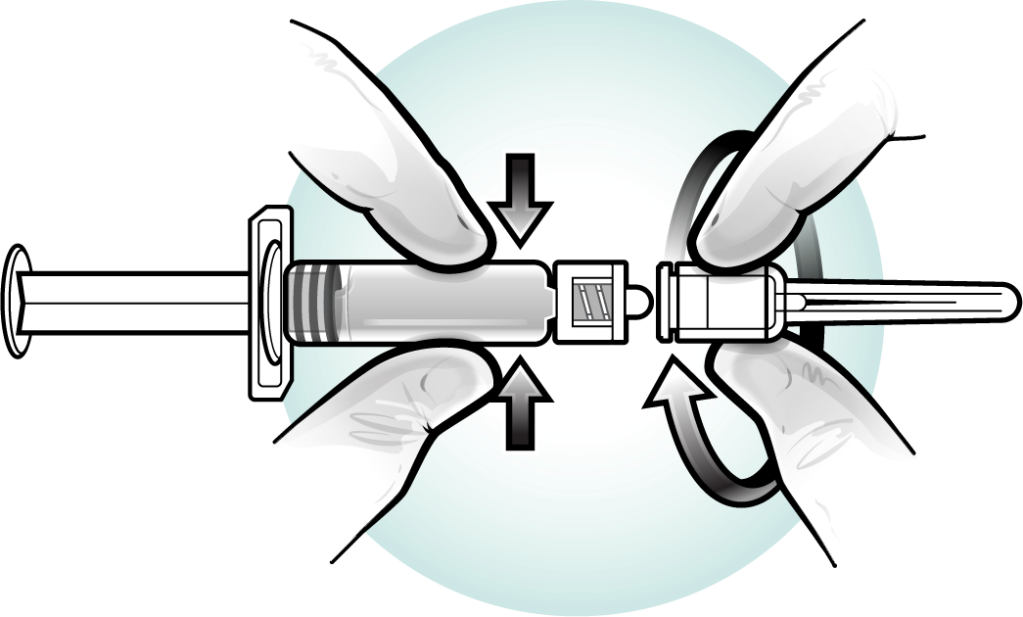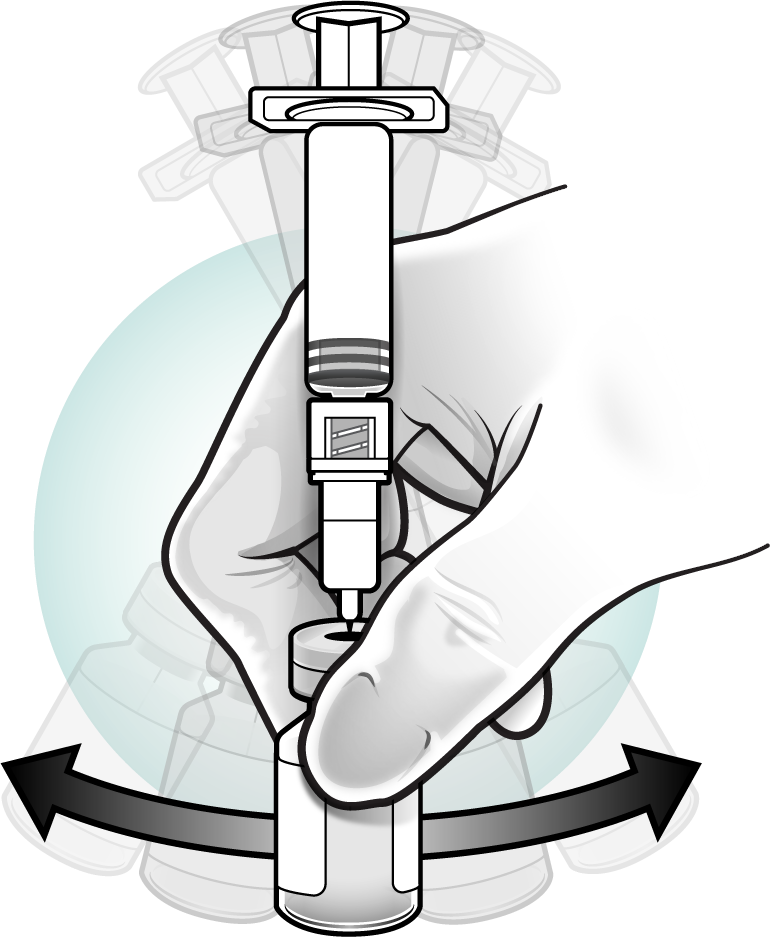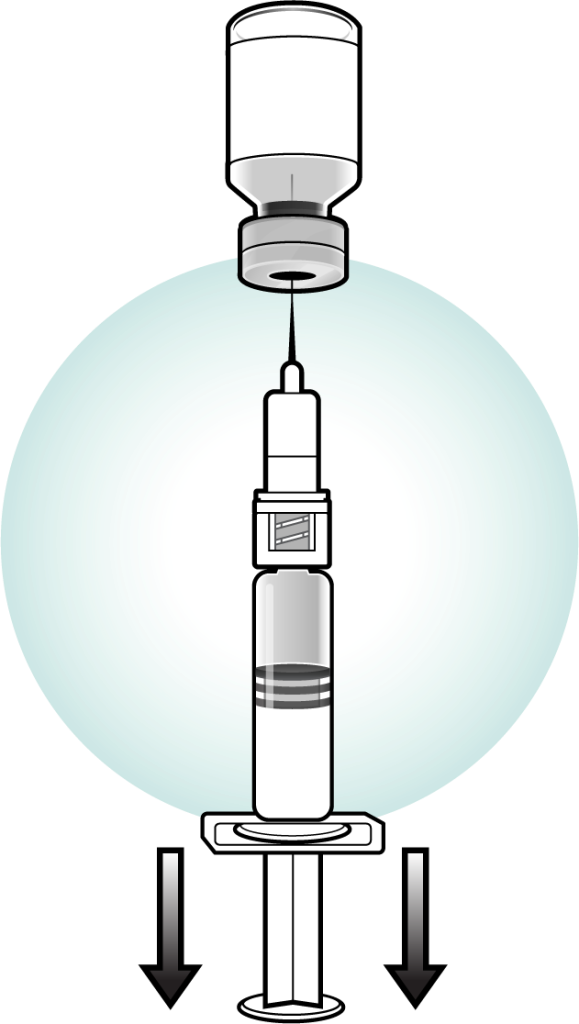Reconstitute ProQuad using a prefilled diluent syringe
Hold the syringe barrel in one hand and unscrew the syringe tip cap by twisting it counterclockwise. Attach a needle by twisting clockwise until the needle fits securely on the syringe.


Visually inspect the vaccine for discoloration. Slowly inject the entire volume of sterile diluent prefilled syringe into the lyophilized vaccine vial. Gently agitate to dissolve completely. Discard if the lyophilized vaccine cannot be dissolved. Do not use the product if particulates are present or if it appears discolored.
Before reconstitution, the lyophilized vaccine is a white to pale yellow compact crystalline plug. ProQuad, when reconstituted, is a clear pale yellow to light pink liquid.

Visually inspect the vaccine again for discoloration. Withdraw and administer the entire volume of the reconstituted vaccine.

- If not used immediately, the reconstituted vaccine may be stored at room temperature, protected from light, for up to 30 minutes. Discard reconstituted vaccine if it is not used within 30 minutes.

